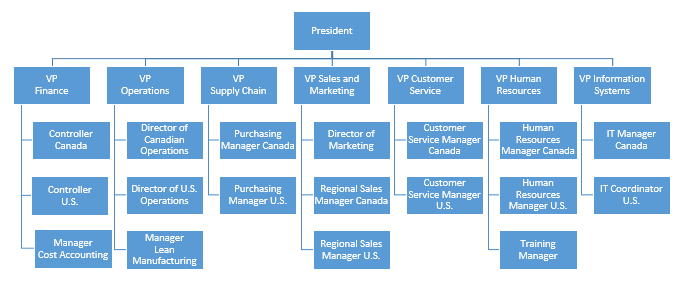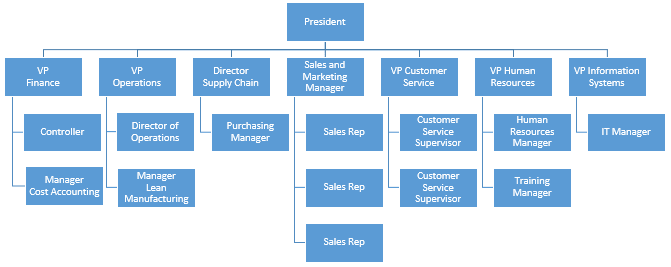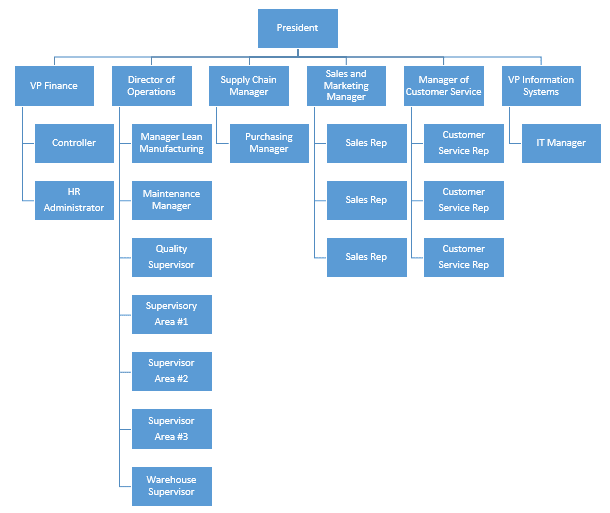(Reading Time: 5 minutes)
By planning the organization that will be required in the future, leaders can make better hiring decisions today.
Bob Jones is the President of Delta Corporation, a $20M manufacturer of boxboard packaging with one plant and 80 staff. He has assembled a qualified team that is capable of executing their duties in the current environment. As the leader of Delta’s key executive group, Bob has just completed a strategic planning process that sets out ambitious financial goals for the next three years which will result in the doubling of revenue to $40M and increasing staff to about 140. In order to achieve these goals, as well as to remain competitive in its rapidly evolving industry, Delta will be required to make a number of significant changes to the way it operates over the next three years or else it will be ill-prepared for the planning horizon beyond three years. Key projects that must be addressed include:
- Relocation of the main operation to a larger building in an area which is closer to the airport.
- Implementation of a new ERP system to replace the antiquated one which Delta has now outgrown.
- Updating the company’s HR policies to be more in line with current practices and regulations, and the training of management and supervision to ensure adoption of these new policies.
- Introduction of LEAN manufacturing in order to generate the cost savings and quality improvement which will be required in order to meet the ambitious financial goals.
- Expansion into the U.S. market both from a sales perspective and, eventually, in manufacturing as well, in order to create a natural hedge against currency fluctuations.
Bob considers the challenges ahead and has come to the conclusion that, while his team is doing well in the world that Delta operates in now, he realizes that the world is about to change and that many of his “adequate” managers will not be adequate in the new world. This will lead to a need to change their current organization chart.
Delta Corporation
Current Organization

Bob struggles with the dilemma before him. How can Delta take on these critical but highly distracting projects and still continue to operate the business profitably? He is worried that any one of these projects could bring the organization to a near standstill since his current team is only sized (in numbers and in talent potential) for what they are doing today.
He could try to assign some new responsibilities to the most promising among his team and see how they make out. If they do well, he could move them up in the organization later and backfill with new hires. If this worked across the board, his problems would be solved. If it doesn’t work, he might have taken six months to a year to find that out, and then his three-year goals might be in jeopardy. He would also have some organizational patchwork to do as well.
Then a thought occurs to him. Why not start from the other end? Why not visualize Delta Corporation’s organizational chart as it will be three years from now (assuming that it meets its growth goals)?
Such an organization might appear as follows:
Delta Corporation
Current + 3 Years

Now, which members of his current team could find a place in the “Current + 3 Year” organization chart? He concludes that his current Director of Finance is probably not strong enough to cope with the challenges that will be coming and he will have to replace him with someone more seasoned. Also, his Director of Operations is already at his limit and will likely become the Canadian Director of Operations (more or less remaining in his current role) and Bob will have to recruit someone to take over the overall Operations responsibility. Similarly, the jury is out on whether the Supply Chain Manager can step up into the VP role in three years. Time will tell.
In the Sales area, the current Sales and Marketing Manager is nearing retirement and likely won’t want to accept a more senior role with the added responsibility. The current Customer Service Manager is a high-energy and ambitious person and may well adapt to more responsibility. A senior human resources manager will have to be recruited from outside, as will a senior information technology manager.
Bob decides to take one step back to try to visualize the organization chart as it will have to be in 2 years in order to be prepared to progress to that envisioned for 3 years in the future.
This one may look like this:
Delta Corporation
Current + 2 Years

The Current + 2 Years organization chart does not have the U.S. positions in place as the U.S. plant is not scheduled to be operating until the following year.
Bob keeps going and sets out what the organization will look like next year (Current + 1 Year) and comes up with the following:
Delta Corporation
Current + 1 Year

This organization chart indicates a more senior role for Human Resources, with a VP now leading that function, and reporting directly to the President. It also provides for replacing his current Supply Chain Manager with a stronger person who becomes Director of Supply Chain. Additional managers are hired in customer service and the current Customer Service Manager becomes the VP Customer Service.
Finally, Bob decides to set out what his organization must look like six months from now if he is to be on a path that will get him and Delta where they need to be three years from now.
This chart looks like this:
Delta Corporation
Current + 6 Months

This chart makes Bob realize that he almost immediately needs to upgrade the Finance function and the IT function in order to soon address the challenges that are ahead. He needs to have IT report directly to him in view of the importance of the new ERP implementation and to signal the importance of that project to the rest of the team.
Read More: There’s A Gaping Hole In Your Organization, How Do You Fill It?
Conclusion:
By regularly reviewing his sequence of future organization charts and updating them as conditions change, Bob is able to plan for his talent requirement well in advance and is able to coach employees into more suitable roles that fit their abilities and interests. He is now less likely to make a hiring decision or a promotional decision that, in hindsight, reveals itself to be a short-term, dead-end move that he has to reverse course on later.
Once again, “plan” beats “no plan”.
Kathbern Management is an executive search firm based in Toronto, helping companies find the executives and senior managers who not only have the experience and credentials to fulfill their responsibilities, but also have the emotional and “fit” requirements that will enable them to be successful in a particular environment. We simplify the process and, through our deep research, are able to bring more and better candidates forward than would ever be possible through a do-it-yourself passive advertising campaign.
Contact us today for a free consultation about your key person search.

